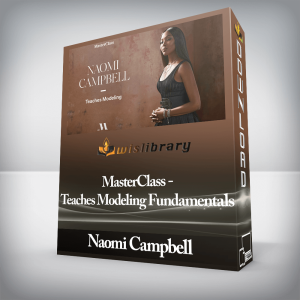5 Hours 24 MinutesPrevious treatments for hoarding have been vastly ineffective due in part to a lack of formal definition of the diagnostic criteria, deficits of applied research, faulty case conceptualization, and scant treatment interventions. With the recent release of the DSM-5, in which Hoarding Disorder has finally been identified as its own disorder, appropriate clinical treatment interventions can now be guided by these revisions.Purchase Compulsive Hoarding: Conceptualizing and Treating the Chaos – Pam Kaczmarek courses at here with PRICE $199.99 $85A Complex and Unique DisorderPrevious treatments for hoarding have been vastly ineffective due in part to a lack of formal definition of the diagnostic criteria, deficits of applied research, faulty case conceptualization, and scant treatment interventions. With the recent release of the DSM-5, in which Hoarding Disorder has finally been identified as its own disorder, appropriate clinical treatment interventions can now be guided by these revisions. The continual increase of media attention brings an onslaught of clients seeking clinical interventions from professional mental health care providers who are vastly unprepared to treat this rapidly growing and misunderstood population. Although hoarding has traditionally been considered a symptom dimension within OCD and OCPD, recent research findings has proved otherwise and led to the latest DSM-5 revisions. Patients who hoard do not respond similarly to the psychotherapies or pharmacological treatments used for other OCD manifestations. Instead, a multimodal cognitive-behavioral and medication approach has been shown to have a much greater success rate in the treatment of compulsive hoarding.This recording helps participants conceptualize the chaos specific to hoarding and learn treatment strategies that actually improve patient outcomes. Course work delves into the phenomenology associated with hoarding and OCD and investigates their similarities and differences. This recording covers both assessment and interventions, including case studies that illustrate the findings and prepare you to truly help your clients who hoard. Participants benefit from videos, group exercises, and adult learning theory methods. Don’t miss this valuable opportunity.Explore the new DSM-5 criteria for Hoarding Disorder and distinguish Axis I OCD from Axis II Obsessive Compulsive Personality Disorder (OCPD)Recognize the behavioral and cognitive symptoms associated with hoardingIdentify the unique complex characteristics of hoarding, including brain structural differencesExamine the differences between organic hoarding (brain damage) and the hoarding in Hoarding DisorderGain an overview of cognitive-behavioral and biopsychosocial perspectives on hoarding including etiological theories, possible vulnerability factors, course of disorder over the lifetime, and the impact of age and genderDetermine what diagnostic tools can assist in proper assessmentDiscuss specific interventions for hoarding that are used by top researchers and cliniciansGain confidence with treatment planning for hoarding clientsFOUNDATIONS OF HOARDING: A UNIQUE, COMPLEX DISORDERBrief history of hoardingPrevious working and current definition of hoarding disorder with possible case vignetteUnderstanding what leads to clutterUnderstanding what’s most commonly hoardedUnderstanding how items collect and are acquiredCommon hoarding featuresIdentify unique hoarding characteristicsNeurocognitive deficits commonly seen in hoardingBehaviors of compulsive hoardingCognitive Behavioral Therapy (CBT) model for hoardingCompulsive hoarding vs. OCDHoarding vs. collecting: compare & contrastHoarding in context to animal hoardingRisk factors in compulsive hoardingTrauma and& hoardingBasic demographicsImpact of cultureDistinguish Axis I OCD from Axis II Obsessive- Compulsive Personality Disorder (OCPD)Understanding obsessions vs. compulsions in OCDACCURATE ASSESSMENTS AND PROPER DIAGNOSISNosological considerations and clinical considerations that led to the DSM-5 reclassification of hoardingCo-morbid diagnoses—including Axis I & II disordersOrganic hoarding vs. Hoarding DisorderLevel of insight in hoarding vs. non-hoarding OCDThinking styles, beliefs about possessions, and avoidance patternsEgosyntonic vs Egodystonic considerationsAssessment tools specific to hoardingTREATMENT PLANNINGUnderstanding the role of insight in treating compulsive hoardingDemos and simulated exerciseStages of change and examples with compulsive hoardersMotivational interviewing for hoarding clientsBrief discussion about brain structure differencesMedicationsValue of psycho-educationINTERVENTIONS FOR HOARDING BEHAVIORSession sequence suggestionCBT treatment planning model outlineTreating acquiring and discardingTreating organization problemsOverview of cognitive restructuring with hoarding patientsDownward Arrow techniqueBehavioral experiment as tool with hoardersSomatic awareness as possible novel strategyCompulsive hoarding group workWatch outs!Must dos!Minimizing RelapseTag: Compulsive Hoarding: Conceptualizing and Treating the Chaos – Pam Kaczmarek Review. Compulsive Hoarding: Conceptualizing and Treating the Chaos – Pam Kaczmarek download. Compulsive Hoarding: Conceptualizing and Treating the Chaos – Pam Kaczmarek discount.Purchase Compulsive Hoarding: Conceptualizing and Treating the Chaos – Pam Kaczmarek courses at here with PRICE $199.99 $85

 Nursing Documentation: Legally-Proven Strategies to Keep You Out of the Courtroom – Rachel Cartwright-Vanzant
₹14,110.00
Nursing Documentation: Legally-Proven Strategies to Keep You Out of the Courtroom – Rachel Cartwright-Vanzant
₹14,110.00
 12-Lead ECG – Cynthia L. Webner & Karen M. Marzlin
₹14,110.00
12-Lead ECG – Cynthia L. Webner & Karen M. Marzlin
₹14,110.00
Compulsive Hoarding: Conceptualizing and Treating the Chaos – Pam Kaczmarek
₹14,110.00



